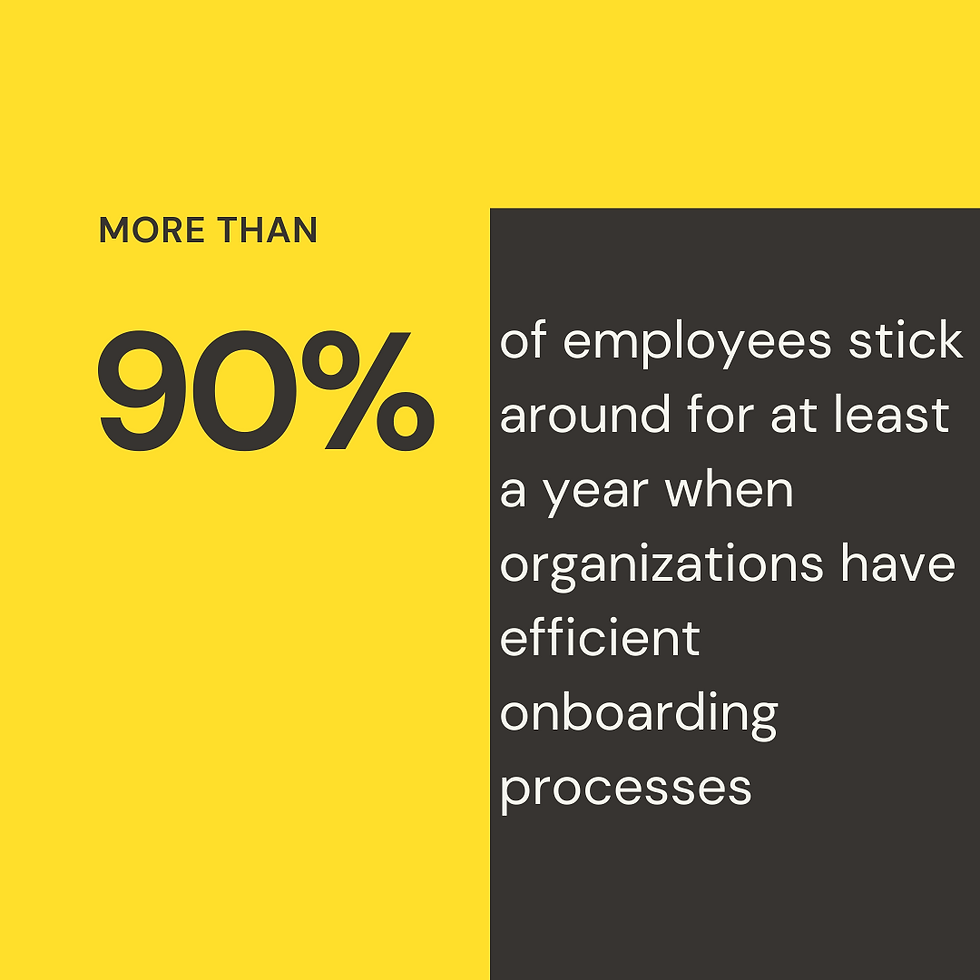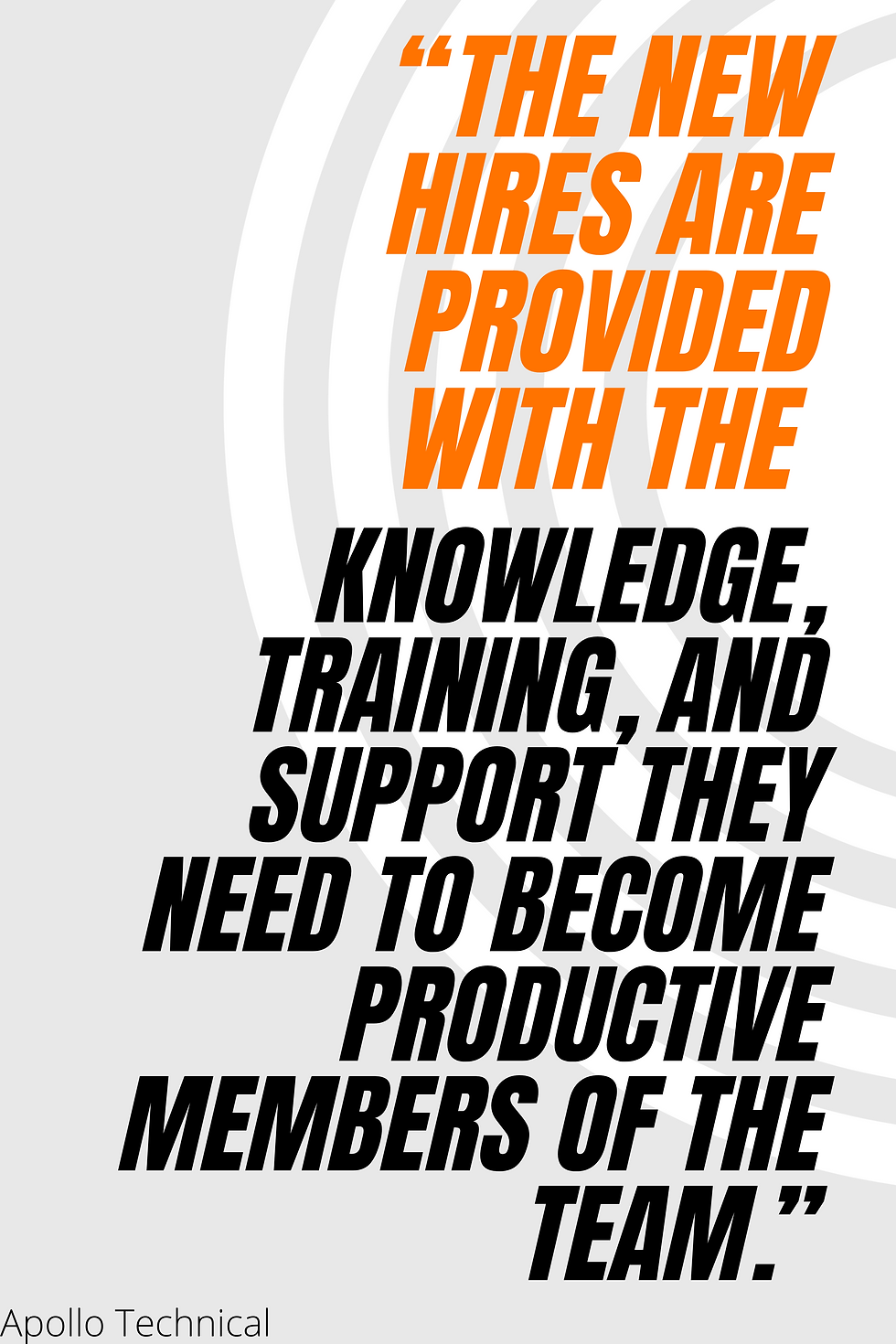Onboarding and Probation Periods: The First 90 Days
- Jennifer Rea
- Sep 11, 2021
- 3 min read
Updated: Sep 14, 2021
In the previous blog, we determined there is a difference between Orientation and Onboarding. A good Employee Training Program begins with a well-developed Orientation but that is simply a one-time event. Onboarding is different. This can start from Day 0 and last as long as 90 days. If you consider the probation period as well, it might even be the first year.
This video from Roundtable Learning lists excellent reasons why Onboarding is so important to an organization and the numerous benefits it provides.
Putting all of the different pieces of Onboarding does take time. Our department put together a Task Force that worked both on our Onboarding and Orientation. The Orientation piece is easier because it is a one-time event. Onboarding is more difficult because of the variety of positions we have within our department. The fact remains that Onboarding is still important no matter how difficult the hurdle might be for it to be implemented.

Edgepoint Learning provides some key points when it comes to Onboarding.
Establish your new employee procedures, beforehand
Ensure that all managers use a new hire training checklist
Start onboarding before day one
Include onboarding best practices into your procedures
Train for culture, not just topics
Build in regular reviews and adjustments to your training program
It was pleasing to think through how we went through this process and attempted to cover most of them. We actually established the fact that our Administrative Staff was key in helping to Onboard our new hires. They are the ones that “start onboarding before day one.” They help with the preparations and constant communications to make sure the employee is set-up for success beginning early on in the Employee Training Life Cycle.
The Hiring Managers are the next cog to help make the Onboarding process a success. They have a list to ensure the employee has been given the information needed as they begin.
Both the Administrative Support Staff and the Hiring Manager can split these responsibilities and Edgepoint Learning provided a short-list to use as a starting point. The list we developed is very specific to our department needs but also incorporated many of these as well. We included the ordering of business cards, submitting the cell phone allowance form and assigning a Peer Partner.
Start-time and location
Instructions for parking
A quick overview of what you’ll cover that first day
What will be ready for them, such as laptops or headphones
The supervisor’s direct line
Office culture and dress code
Links to nearby coffee or lunch places
Any scheduled meals, meetings, training, or orientations
Indeed also included a list in their article describing the Onboarding checklist with #9 including assigning a peer mentor. Apollo Technical Engineering Solutions also recommends a peer mentor for their Onboarding.
We established our Peer Partner Program as one of the three main tenets of our Onboarding Program. This Peer Partner is meant to be able to answer the questions for the new hire that they might feel embarrassed to ask their immediate supervisor or hiring manager. It might be as simple as the closest eating establishment or as vital as the best method of communication for the team such as phone call, email or texting. We decided that a Peer Partner is assigned for the first 30 days. Other companies do it for up to 90 days and sometimes for a year.
Although individuals may step up to the task of helping new employees by being their Peer Partner or Mentor, they actually should be officially trained for this position. Indeed describes what is involved in having this as part of the Onboarding process. There are some basic ideas to consider.
What is a mentoring program in the workplace?
What benefits will the mentors and mentees enjoy?
How often will mentoring take place?
What format will the mentorship take?

The Peer Partner piece of our Onboarding is probably one of the weakest parts of our current Onboarding process. We definitely need to review and revamp this piece in order to have a more successful program. Measuring the level of success is also something we need to implement. Feedback on a program is pertinent to know whether or not it is reaching the intended goals.
As stated before, Onboarding can be tedious but it is well worth the effort when reviewing the potential turnover from not having it. Apollo Technical stated it well. If done correctly, “The new hires are provided with the knowledge, training, and support they need to become productive members of the team.”
The next chapter of the Employee Training Life Cycle discusses the professional growth of an employee and what opportunities should be provided.



Comments